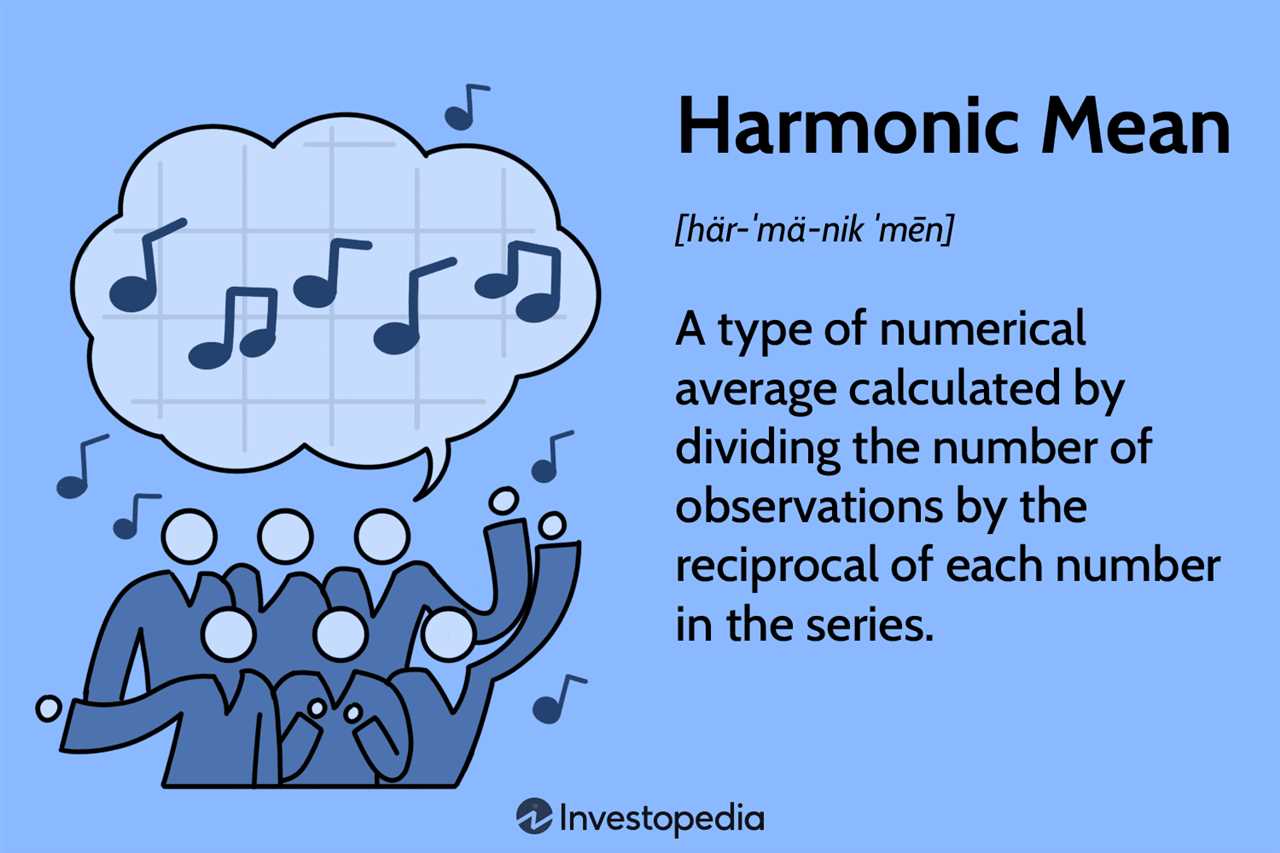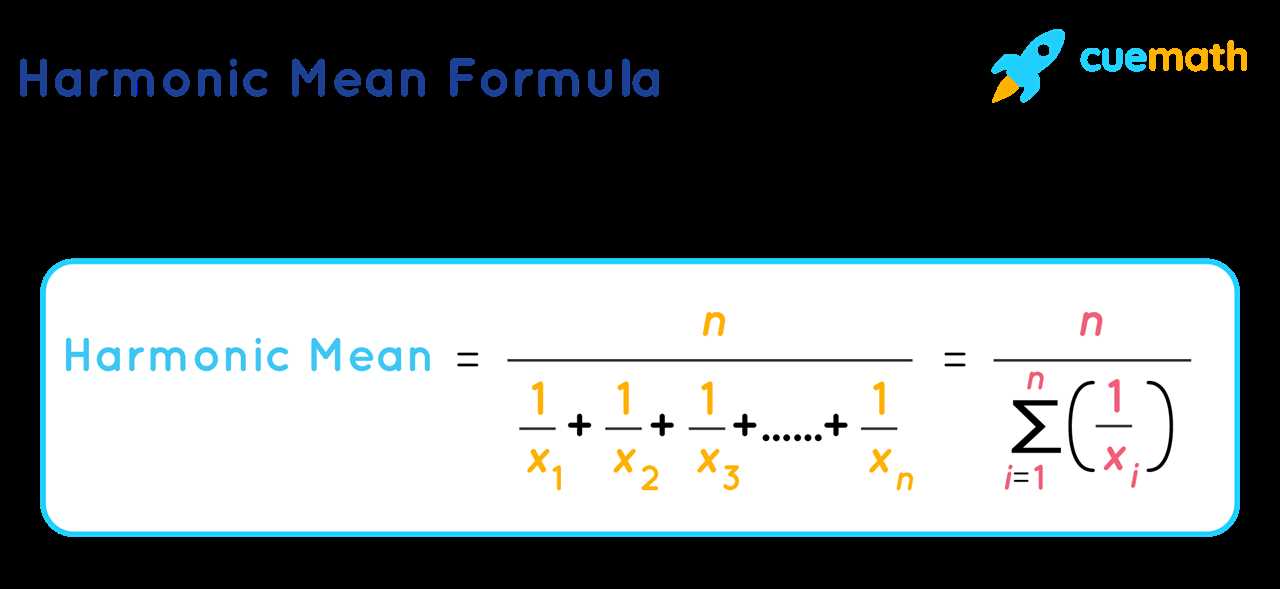What is Harmonic Mean?

Definition of Harmonic Mean
The formula for calculating the harmonic mean is:
Harmonic Mean = Number of Values / (1/Value1 + 1/Value2 + … + 1/ValueN)
Where N is the number of values in the set.
Examples of Harmonic Mean in Accounting
In accounting, the harmonic mean is often used to calculate average rates or ratios. For example, it can be used to calculate the average cost of goods sold per unit, the average price-earnings ratio of a portfolio of stocks, or the average interest rate on a set of loans.
Let’s say a company has sold 100 units of a product at different prices. The total revenue from these sales is $10,000. To calculate the average price per unit, the company can use the harmonic mean. They would divide the number of units (100) by the sum of the reciprocals of the prices. The resulting value would be the average price per unit.
Overall, the harmonic mean is a useful tool in accounting for calculating average rates or ratios that give more weight to smaller values. It provides a more accurate representation of the true average in situations where smaller values are significant.
Definition of Harmonic Mean

The harmonic mean is particularly useful in situations where the rates or ratios being averaged are inversely proportional to each other. It is commonly used in accounting to calculate average rates of return, average prices, or average costs.
The formula for calculating the harmonic mean is:
Harmonic Mean = n / (1/x1 + 1/x2 + … + 1/xn)
Where n is the number of values being averaged, and x1, x2, …, xn are the individual values.
For example, let’s say we want to calculate the average rate of return for an investment over a period of three years. The rates of return for each year are 5%, 10%, and 15%. Using the harmonic mean, we can calculate:
Harmonic Mean = 3 / (1/0.05 + 1/0.1 + 1/0.15) = 3 / (20 + 10 + 6.67) = 3 / 36.67 = 0.0818
So, the harmonic mean of the rates of return is 0.0818, which represents the average rate of return over the three-year period.
Formula for Harmonic Mean

The harmonic mean is a mathematical concept that is commonly used in accounting to calculate averages. It is particularly useful when dealing with rates or ratios, such as average prices, interest rates, or productivity levels. The formula for calculating the harmonic mean is as follows:
Harmonic Mean = n / (1/x1 + 1/x2 + … + 1/xn)
Where:
- n is the number of values in the dataset.
- x1, x2, …, xn are the individual values in the dataset.
To calculate the harmonic mean, you need to add up the reciprocals of each value in the dataset, then divide the sum by the number of values. The reciprocal of a number is obtained by dividing 1 by that number.
For example, let’s say you want to calculate the average speed of a car over a certain distance. If the car travels at 60 mph for half of the distance, and then slows down to 30 mph for the other half, the harmonic mean would give you a more accurate average speed than the arithmetic mean.
Examples of Harmonic Mean in Accounting
The harmonic mean is a mathematical concept that is widely used in accounting to calculate average rates, ratios, and other financial indicators. It is particularly useful when dealing with data that involves rates or ratios, such as interest rates, growth rates, or productivity ratios.
Here are a few examples of how the harmonic mean is used in accounting:
Example 1: Calculating the average interest rate
Let’s say a company has taken out three loans with interest rates of 5%, 7%, and 10%. To calculate the average interest rate, we can use the harmonic mean. The formula for the harmonic mean is:
Harmonic Mean = n / (1/r1 + 1/r2 + 1/r3 + … + 1/rn)
Using this formula, we can calculate the average interest rate as follows:
Harmonic Mean = 3 / (1/5 + 1/7 + 1/10) = 6.36%
So, the average interest rate for the company’s loans is 6.36%.
Example 2: Calculating the average growth rate
Suppose a company’s revenue growth rates for the past three years are 10%, 15%, and 20%. To find the average growth rate, we can again use the harmonic mean. Using the same formula as before, we can calculate the average growth rate as:
Harmonic Mean = 3 / (1/10 + 1/15 + 1/20) = 14.29%
Therefore, the average growth rate for the company’s revenue over the past three years is 14.29%.
Example 3: Calculating the average productivity ratio
Let’s say a company wants to calculate the average productivity ratio for its employees. The productivity ratios for individual employees are 0.8, 0.9, and 1.2. Using the harmonic mean formula, we can find the average productivity ratio as:
Harmonic Mean = 3 / (1/0.8 + 1/0.9 + 1/1.2) = 0.96
Therefore, the average productivity ratio for the company’s employees is 0.96.
These examples demonstrate how the harmonic mean can be a valuable tool in accounting for calculating average rates, ratios, and other financial indicators. It provides a more accurate representation of the average when dealing with data that involves rates or ratios, making it a useful concept in the field of accounting.

Emily Bibb simplifies finance through bestselling books and articles, bridging complex concepts for everyday understanding. Engaging audiences via social media, she shares insights for financial success. Active in seminars and philanthropy, Bibb aims to create a more financially informed society, driven by her passion for empowering others.
